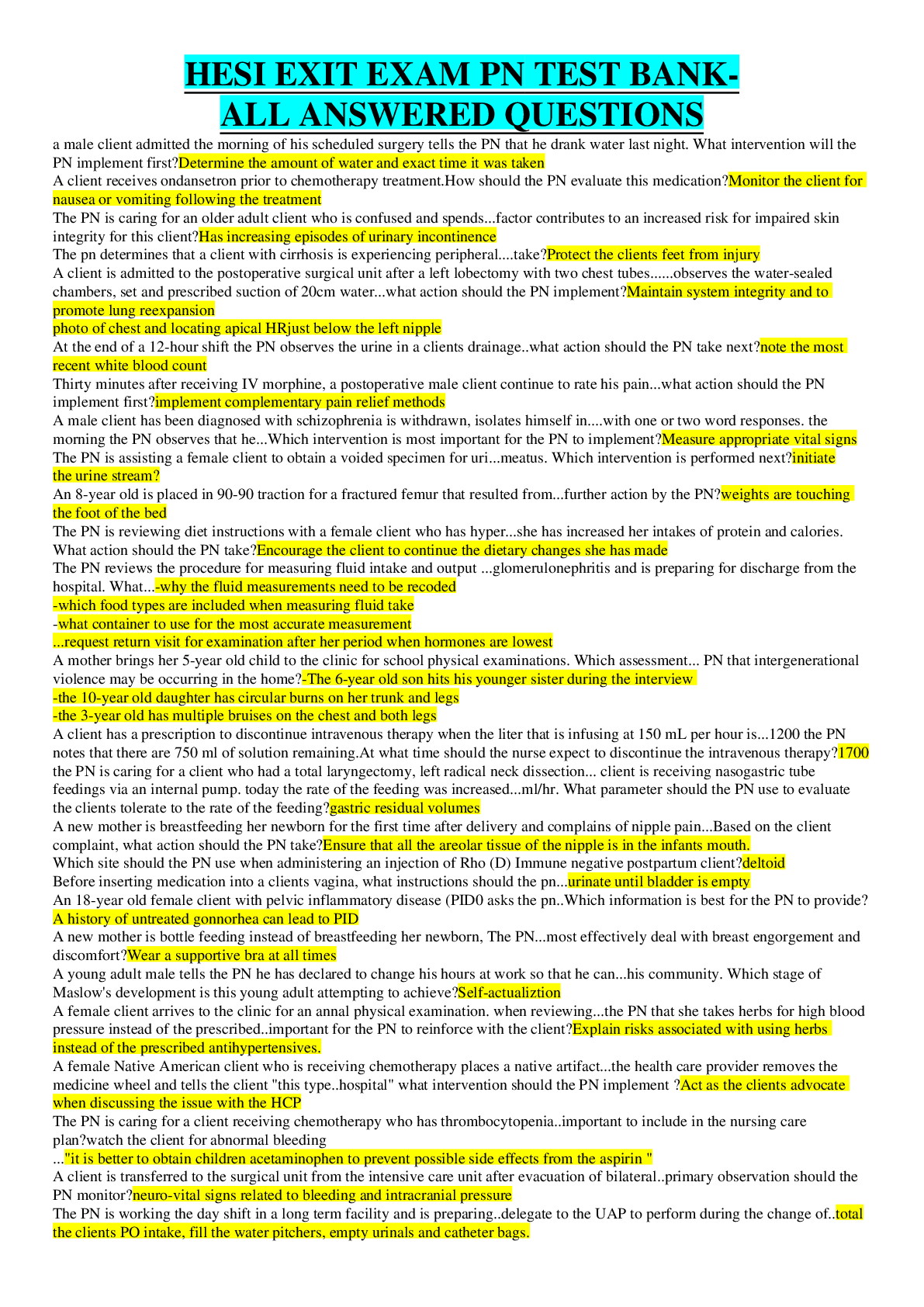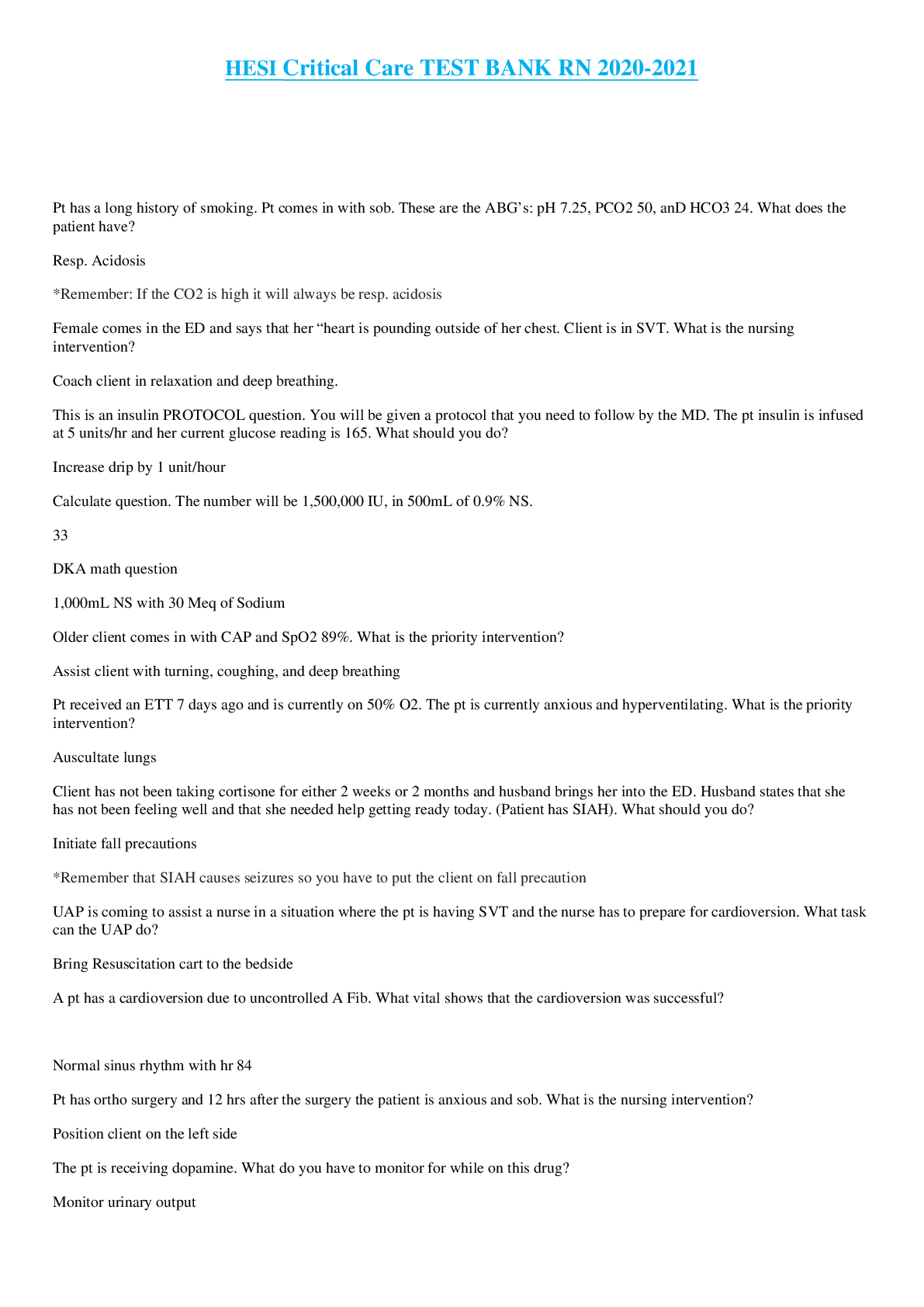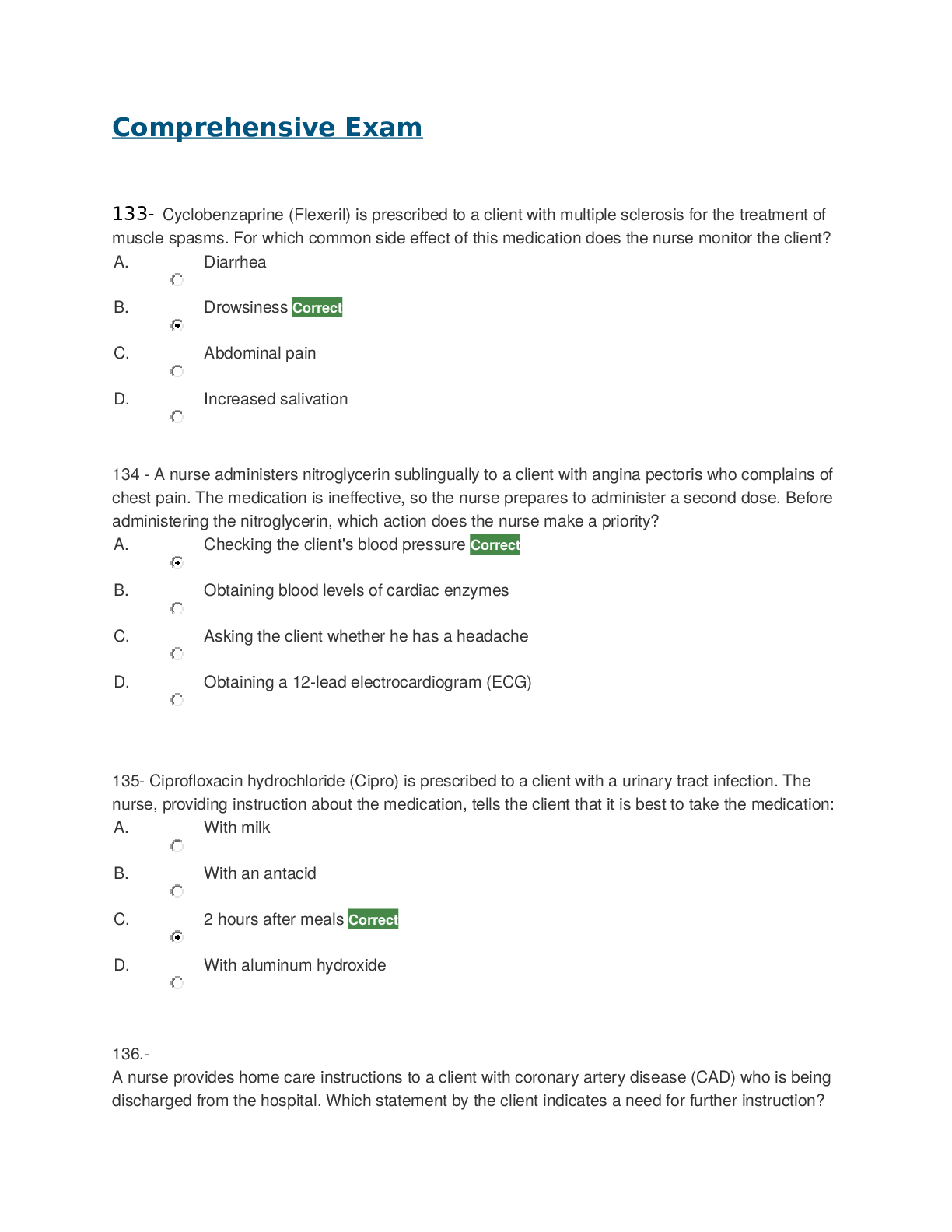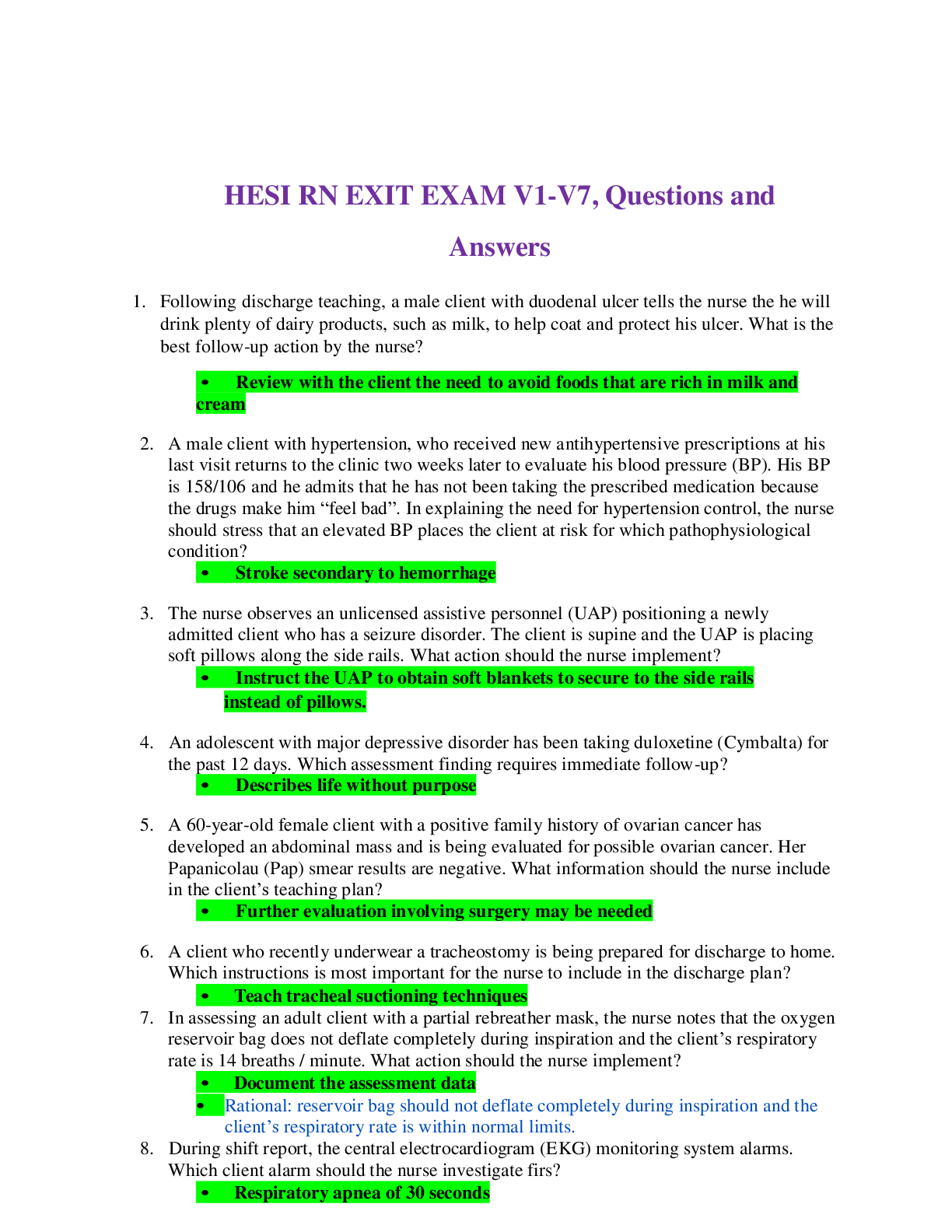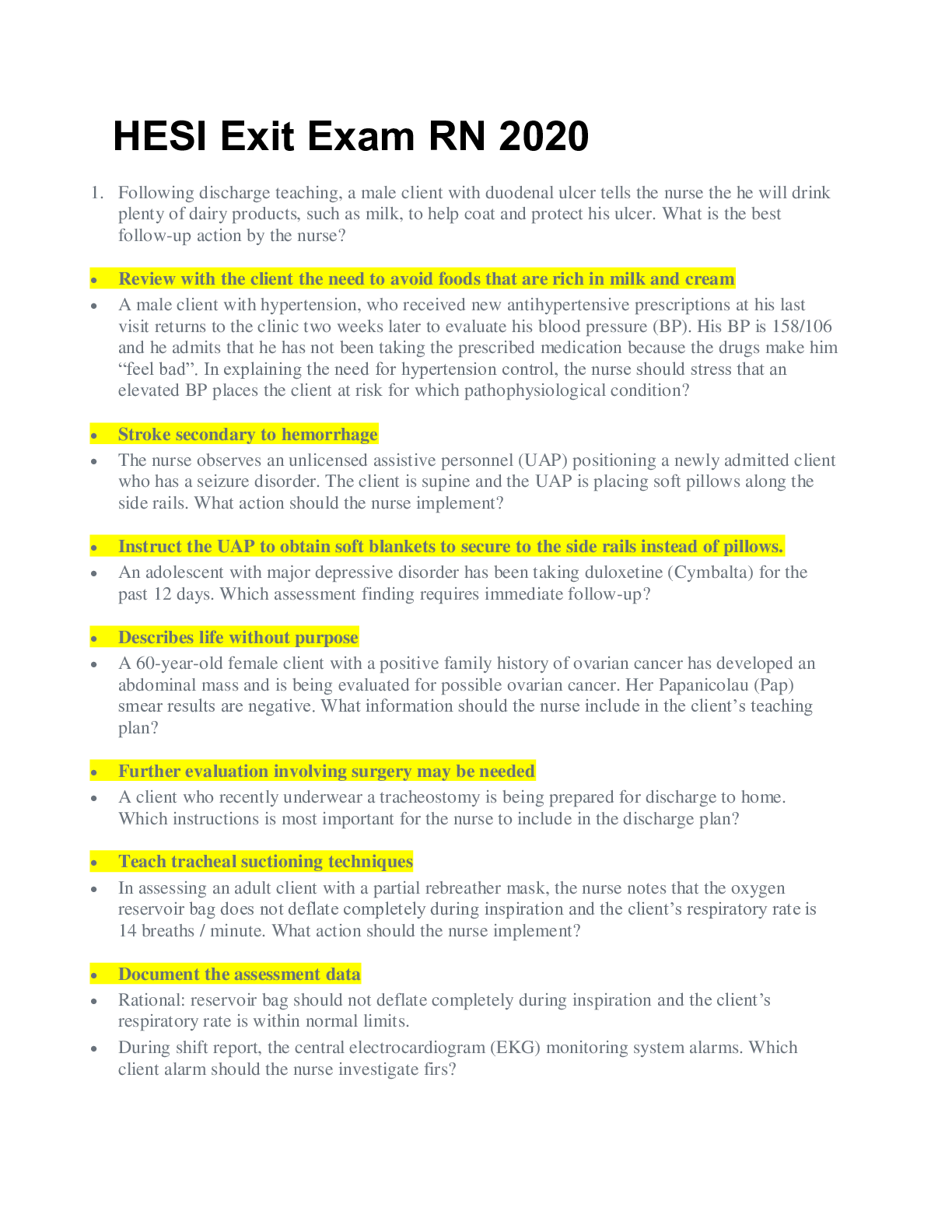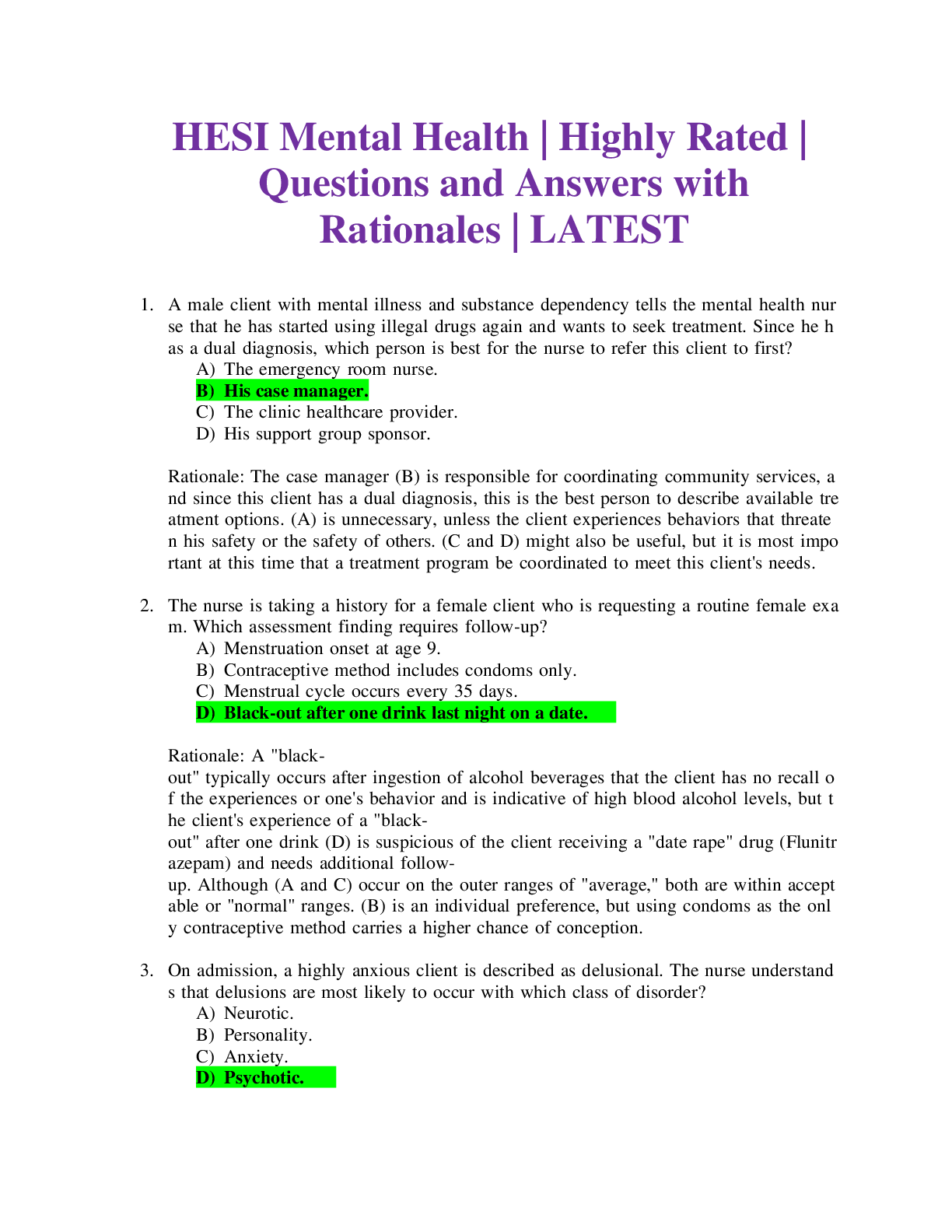Focus on Child Health
Document Content and Description Below
Focus on Child Health 1.ID: 9476972085 An HIV-positive woman delivers an infant. The pediatrician prescribes testing for the newborn, and the nurse prepares for which action? A. Ask the laborato... ry to perform virologic testing Correct B. Obtain blood from the umbilical cord to send to the laboratory C. Perform a heelstick to obtain a specimen for a Western blot assay D. Perform a fingerstick to obtain a specimen for an enzyme-linked immunosorbent assay (ELISA) Rationale: Traditional HIV antibody measurement by ELISA or Western-blot assay is not accurate in infants younger than 18 months because of the persistence of maternal antibodies. Because of the potential for maternal contamination during delivery, umbilical cord blood should not be used for testing. HIV-exposed infants should undergo virologic testing within 48 hours of birth and follow-up testing, depending on the initial results. Test-Taking Strategy: Focus on the subject, a newborn infant exposed to HIV. Recalling that the ELISA and Western blot assay are not accurate in an infant younger than 18 months will assist you in eliminating these options. Next eliminate the option involving cord blood, knowing that such blood could be contaminated. Review the tests to detect HIV in a newborn infant. Level of Cognitive Ability: Applying Client Needs: Physiological Integrity Integrated Process: Nursing Process/Implementation Content Area: Child Health—Infectious Diseases Giddens Concepts:Immunity, Infection HESI Concepts: Immunity, Infection References: McKinney, E., James, S., Murray, S., Nelson, K. & Ashwill, J. (2013). Maternal-child nursing (4th ed., p. 1046). St. Louis: Elsevier. Pagana, K., & Pagana, T. (2013). Mosby’s diagnostic and laboratory tests reference (11th ed., p. 531). St. Louis: Mosby. Awarded 1.0 points out of 1.0 possible points. 2.ID: 9476979301 A nurse providing home care instructions to a mother of a HIV-positive child discusses measures to prevent transmission of the virus. Which statement by the mother indicates a need for further instruction? A. “I won’t let my children share toothbrushes.” B. “I’ll wash up blood spills with soap and hot water and allow them to air dry.” Correct C. “I’ll wash my hands with soap and water if I touch any blood from my child.” D. “I’ll rinse bloodstained clothing with hydrogen peroxide and then wash it as usual.” Rationale: The correct method of cleaning up blood spills is to wash the area with soap and water, rinse with bleach, and let the area air dry. The remaining statements by the mother reflect correct measures to prevent transmission of the virus. Test-Taking Strategy: Note the strategic words “need for further instruction,” which indicate a negative event query and the need to select the incorrect statement. Recalling that blood spills must be cleaned with a 1:10 bleach/water solution will direct you to the correct option. Review these home care measures for HIV. Level of Cognitive Ability: Evaluating Client Needs: Safe and Effective Care Environment Integrated Process: Teaching and Learning Content Area: Child Health—Infectious Diseases Giddens Concepts:Client Education, Infection HESI Concepts: Infection, Teaching and Learning/Patient Education Reference: McKinney, E., James, S., Murray, S., Nelson, K. & Ashwill, J. (2013). Maternal-child nursing (4th ed., p. 1053). St. Louis: Elsevier. Awarded 1.0 points out of 1.0 possible points. 3.ID: 9476976354 A child has been in the hospital for several days for treatment of severe vomiting related his HIV-positive status. Which assessment finding is the best indication that the child’s condition is improving? A. No lesions in the mouth and throat B. Weight increase of 1 lb (0.45 kg) over 3 days C. Correct D. Temperature Changed from 100.2° F to 99.2° F (37.3°C) E. F. Capillary refill slowing from 2 seconds to 3 seconds Rationale: Vomiting results in fluid volume deficit. The most accurate method of evaluating fluid volume increase (the desired outcome) is weight. A temperature decrease is not reflective of fluid volume increase. Increasing capillary refill time is indicative of a fluid volume decrease, not an increase. The absence of mouth ulcers would allow the child to drink without pain but does not reflect a fluid volume increase. Test-Taking Strategy: Note the data in the question and the strategic word, best, and remember that the child is experiencing severe vomiting. Use the process of elimination and focus on the subject, an assessment finding indicating fluid volume increase. The correct option is the only one that related to fluid volume. Review the findings that indicate a positive outcome in a child with HIV with severe vomiting. Level of Cognitive Ability: Evaluating Client Needs: Physiological Integrity Integrated Process: Nursing Process/Evaluation Content Area: Child Health—Infectious Diseases Giddens Concepts: Fluid and Electrolytes, Evidence HESI Concepts: Evidence-Based Practice/Evidence, Fluids and Electrolytes Reference: Hockenberry, M, & Wilson, D. (2015). Wong’s nursing care of infants and children (10th ed. pp. 1067-1068). St Louis: Mosby. Awarded 1.0 points out of 1.0 possible points. 4.ID: 9476980688 A girl with systemic lupus erythematosus (SLE) wants to go to the beach with her friends on the day after their junior prom. The girl asks the nurse for guidance regarding sun exposure. The nurse should provide which information to the girl? A. She cannot be exposed to any sunlight at all B. She must bring a beach umbrella and remain under it all day C. Waterproof sunscreen with a minimum sun protection factor (SPF) of 15 is a necessity Correct D. It is all right to go to the beach as long as she wears sunglasses, a sun hat, and clothes that cover her entire body Rationale: SLE, a chronic multi-system autoimmune disease characterized by inflammation of the connective tissue, varies in severity and is marked by remissions and exacerbations. Although the origin of SLE is not known, genetic, environmental, hormonal, and immune response factors are likely responsible. These factors include exposure to sun and other UV light, stress, fatigue, viruses, bacteria, certain medications, and some food additives. Avoiding triggers that set off exacerbation is essential, so wearing appropriate sunscreen is a necessity. The sunscreen should contain an SPF higher than 15 and should be waterproof. The remaining options present incorrect information. Test-Taking Strategy: Eliminate the options that are comparable or alike in that they indicate that exposure to sunlight must be avoided. Also, noting the close-ended words “cannot” and “must” will help you eliminate these options. Review measures that will help prevent an exacerbation of SLE. Level of Cognitive Ability: Applying Client Needs: Safe and Effective Care Environment Integrated Process: Teaching and Learning Content Area: Safety Giddens Concepts: Client Education, Immunity HESI Concepts: Immunmity, Teaching and Learning/Patient Education Reference: Hockenberry, M, & Wilson, D. (2015). Wong’s nursing care of infants and children (10th ed. pp. 622, 1610). St Louis: Mosby. Awarded 1.0 points out of 1.0 possible points. 5.ID: 9476981945 A nurse is monitoring a school-age child who is being treated for dehydration. The nurse notes that the child’s urine output has been 1 mL/kg/hr over the past 3 hours and that the specific gravity of the urine is 1.020. Which is the appropriate nursing action? A. Contact the pediatrician B. Document the findings Correct C. Encourage the child to drink more fluids D. Increase the rate of flow of the intravenous (IV) solution Rationale: Urine output of less than 2 to 3 mL/kg/hr in infants and toddlers, 1 to 2 mL/kg/hr in preschoolers and young school-age children, and 0.5 to 1 mL/kg/hr in school-age children or adolescents indicates dehydration. A specific gravity of the urine above 1.020 may indicate dehydration. The nurse would document the findings, because they are normal. Test-Taking Strategy: Focus on the data in the question. Eliminate the options that indicate the need to implement additional treatment. Additionally, note that these options indicate increasing fluid intake. Remember also that the nurse would not increase the rate of IV fluids without a pediatrician’s prescription to do so. Review normal findings related to urine output and specific gravity in a school-age child. Level of Cognitive Ability: Applying Client Needs: Physiological Integrity ............continued [Show More]
Last updated: 1 year ago
Preview 1 out of 60 pages

Reviews( 0 )
Document information
Connected school, study & course
About the document
Uploaded On
Jan 29, 2021
Number of pages
60
Written in
Additional information
This document has been written for:
Uploaded
Jan 29, 2021
Downloads
0
Views
43

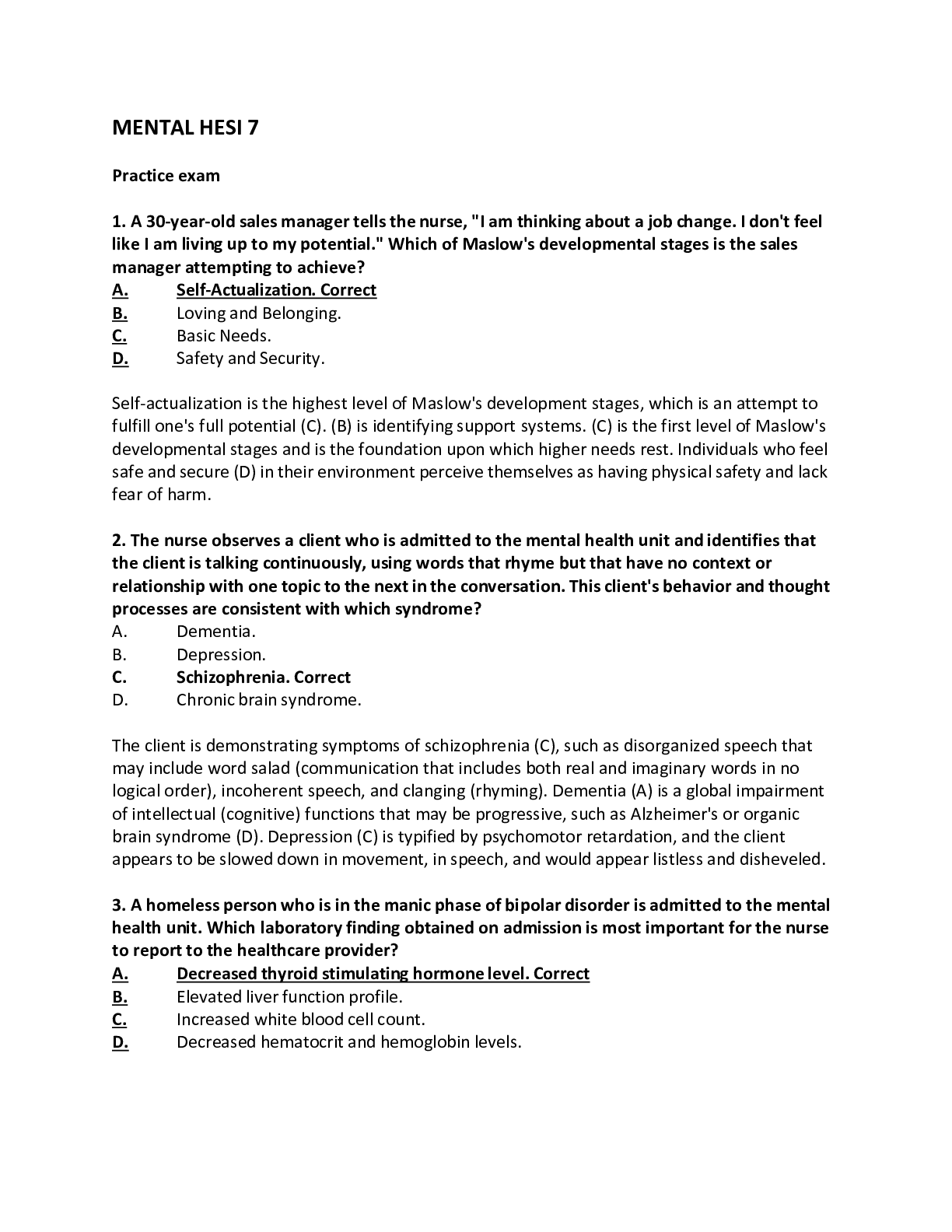
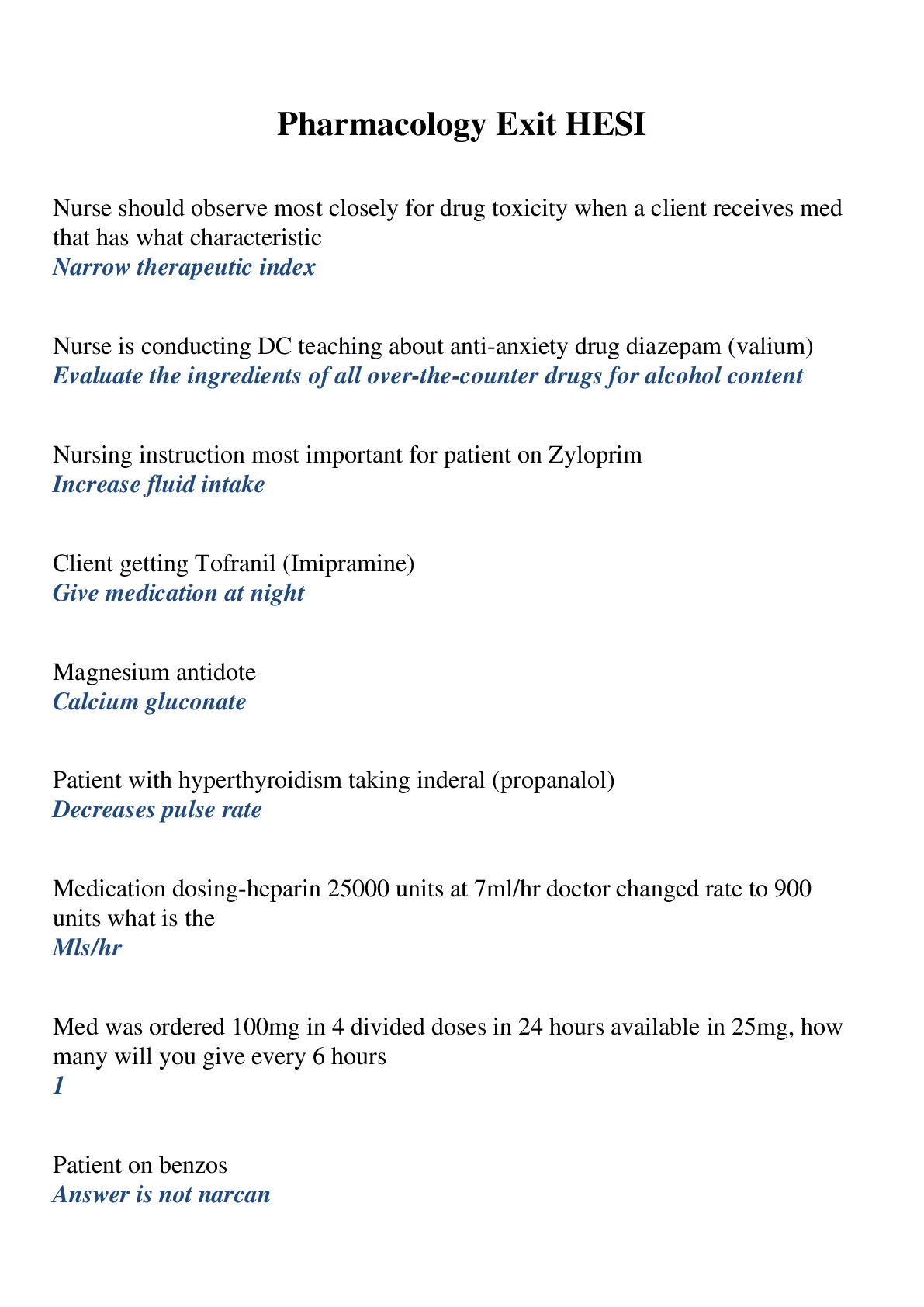
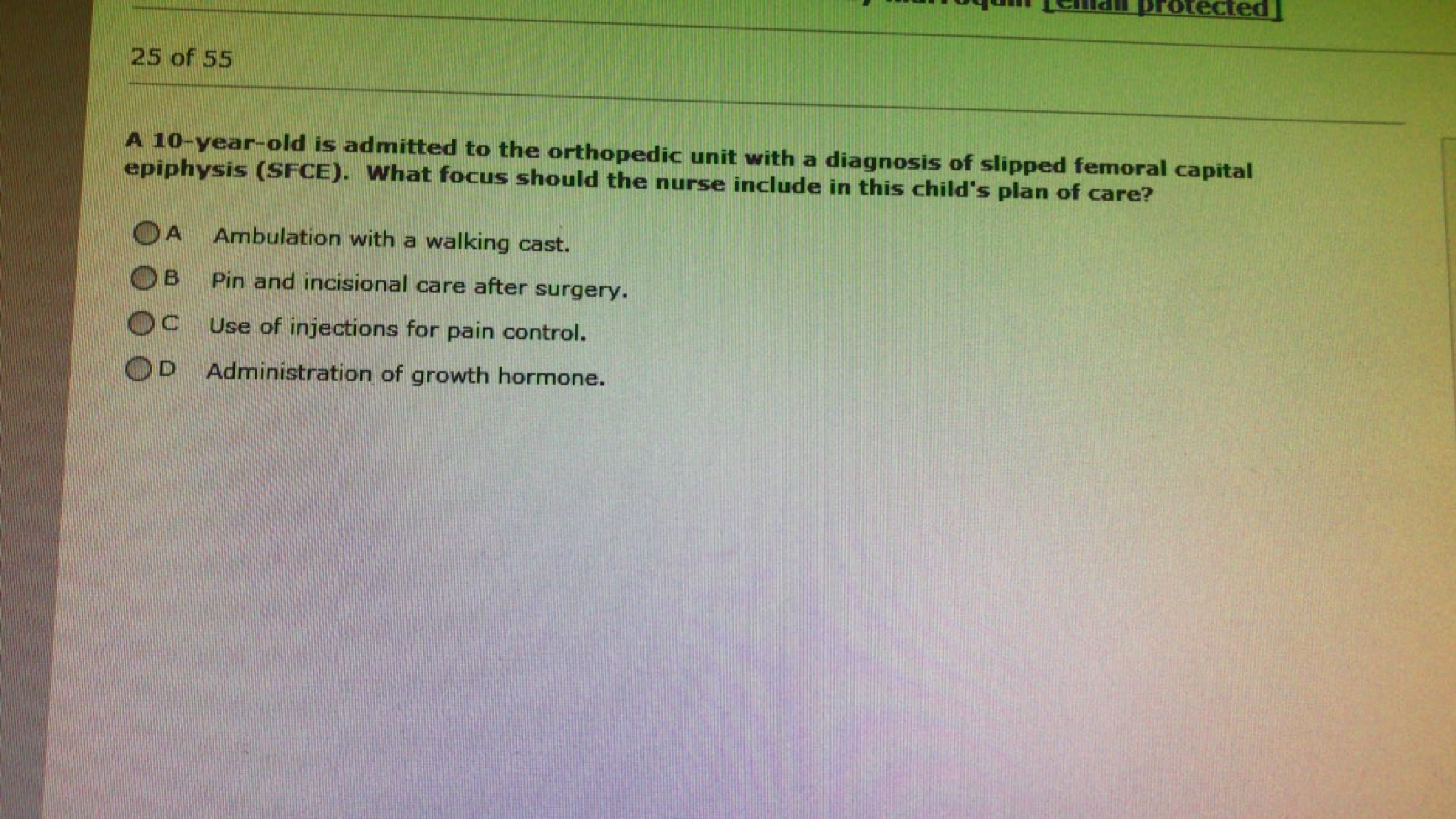
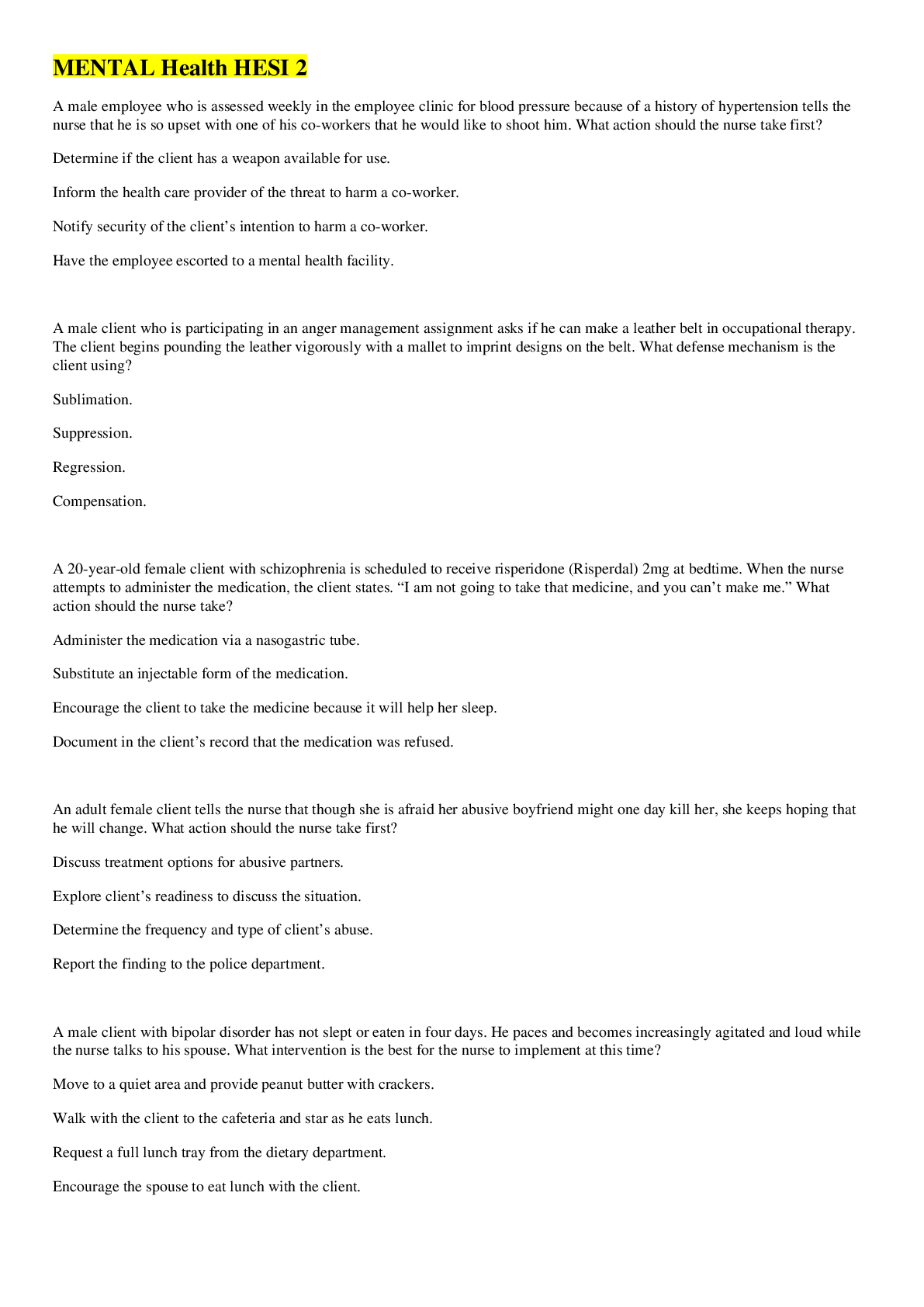
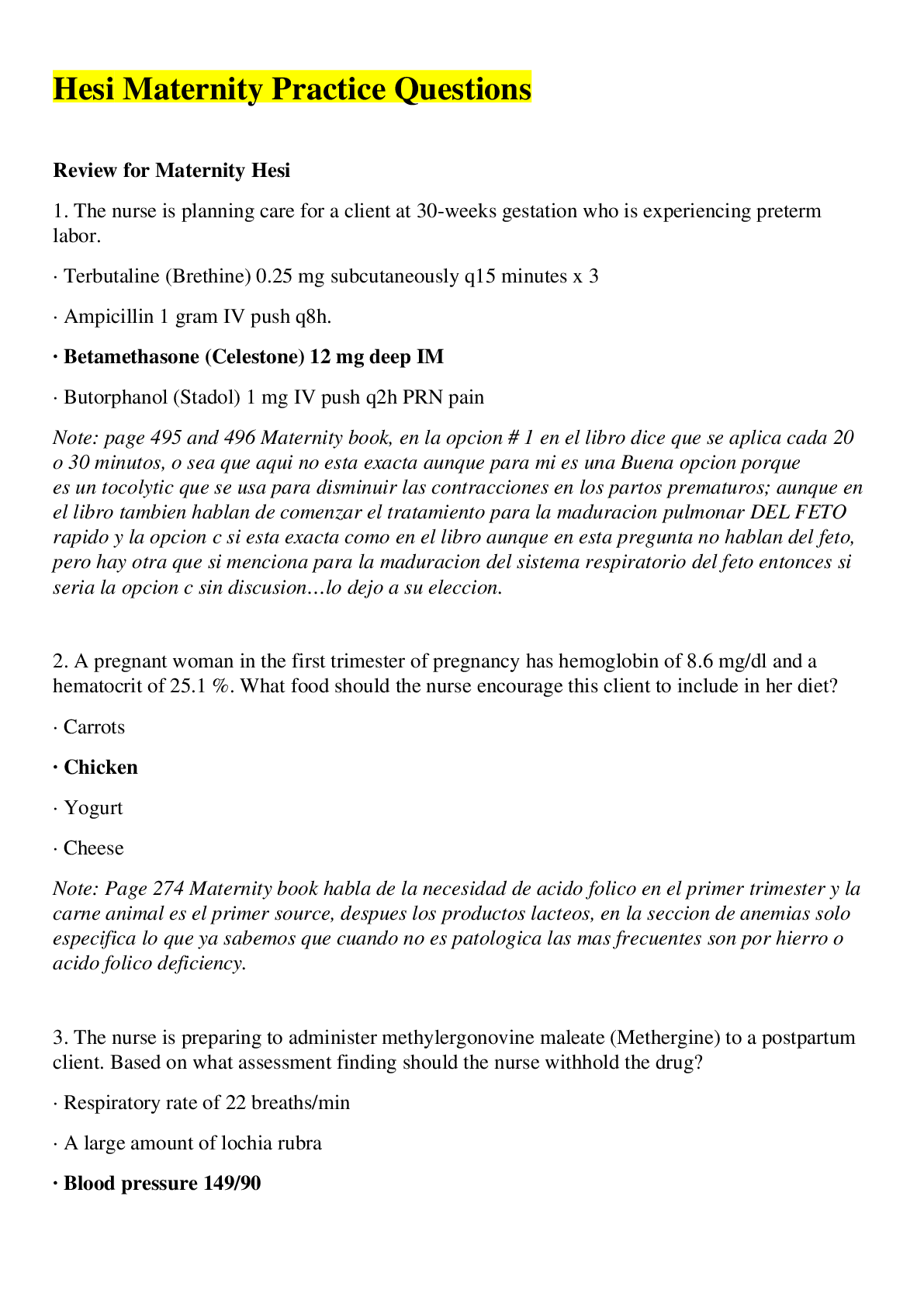
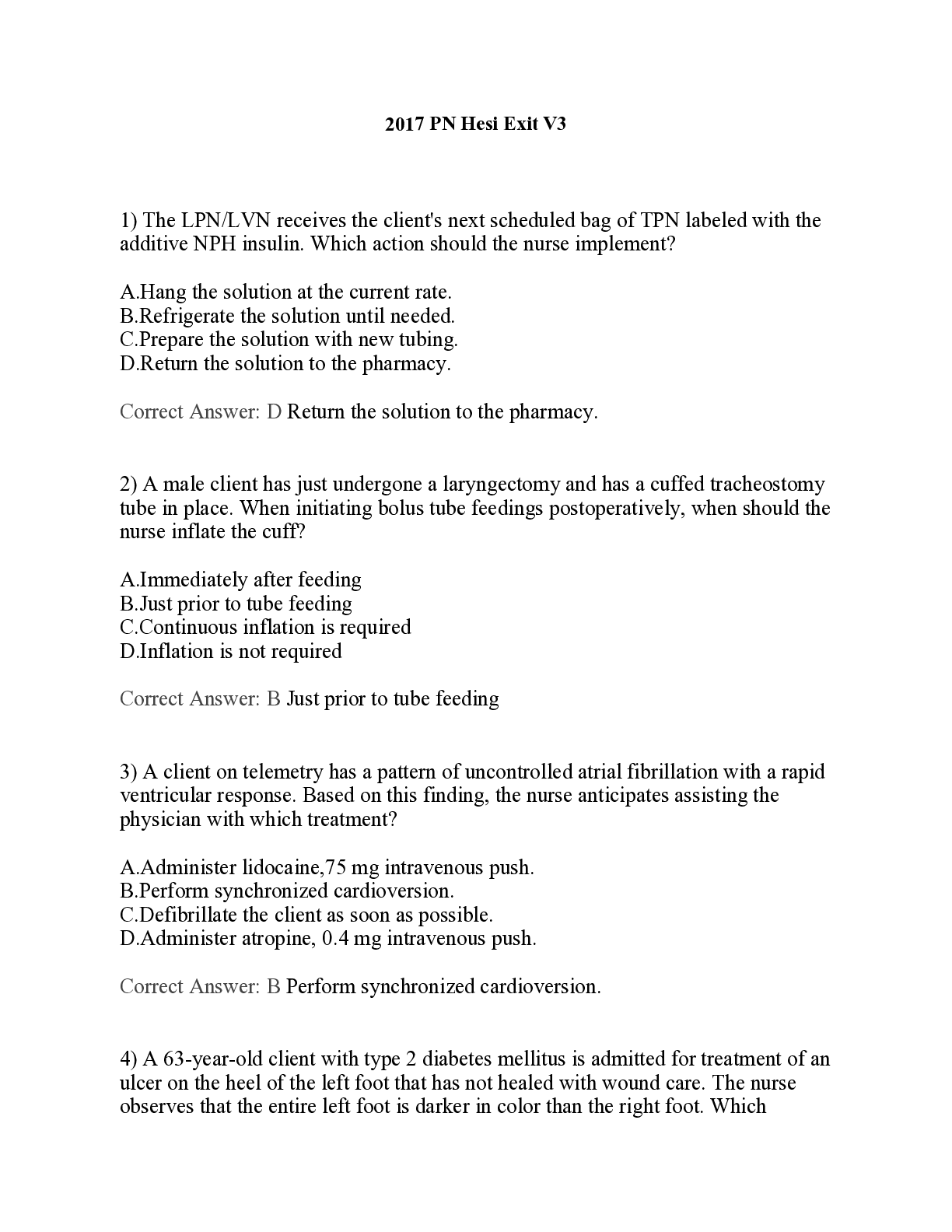
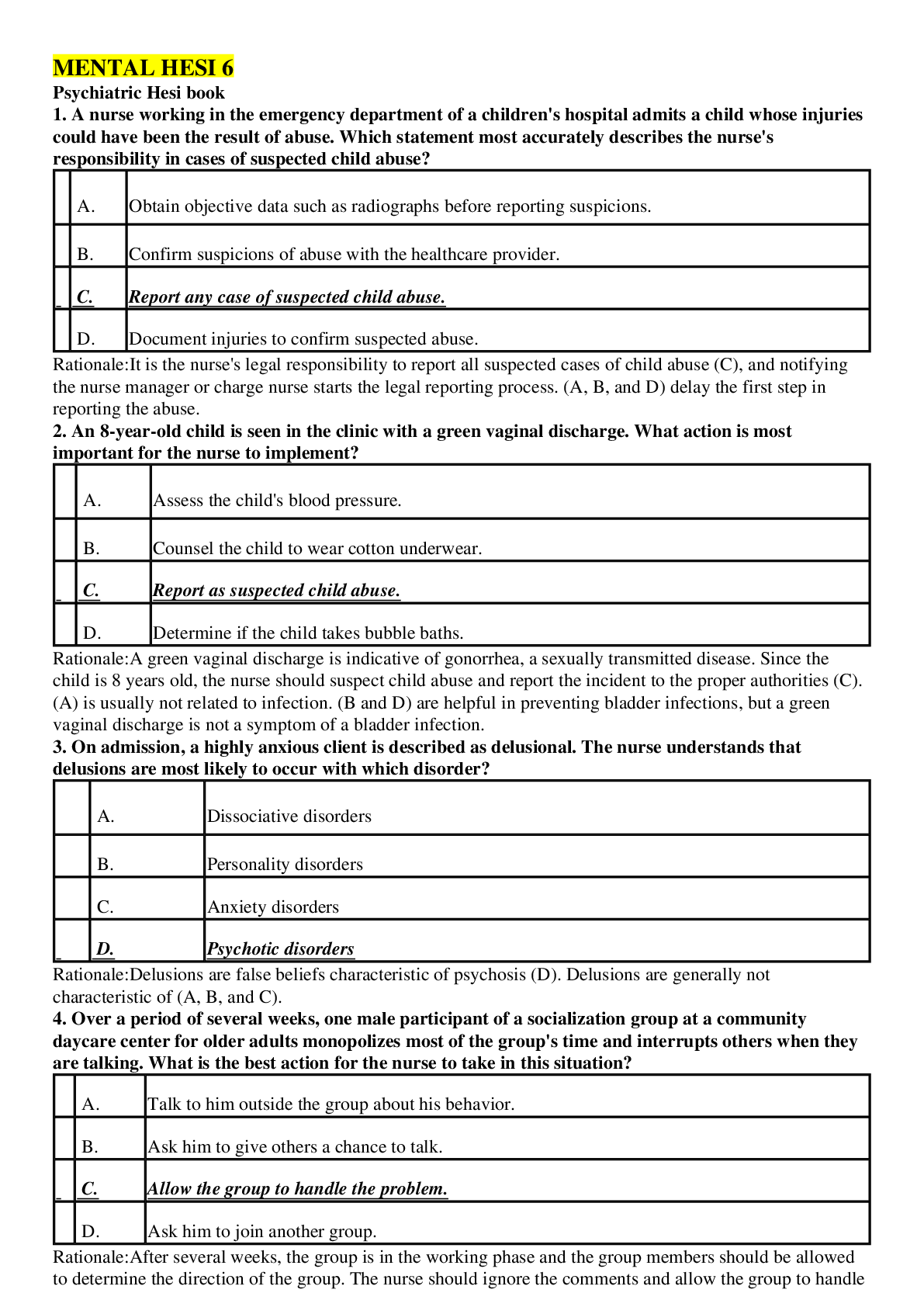
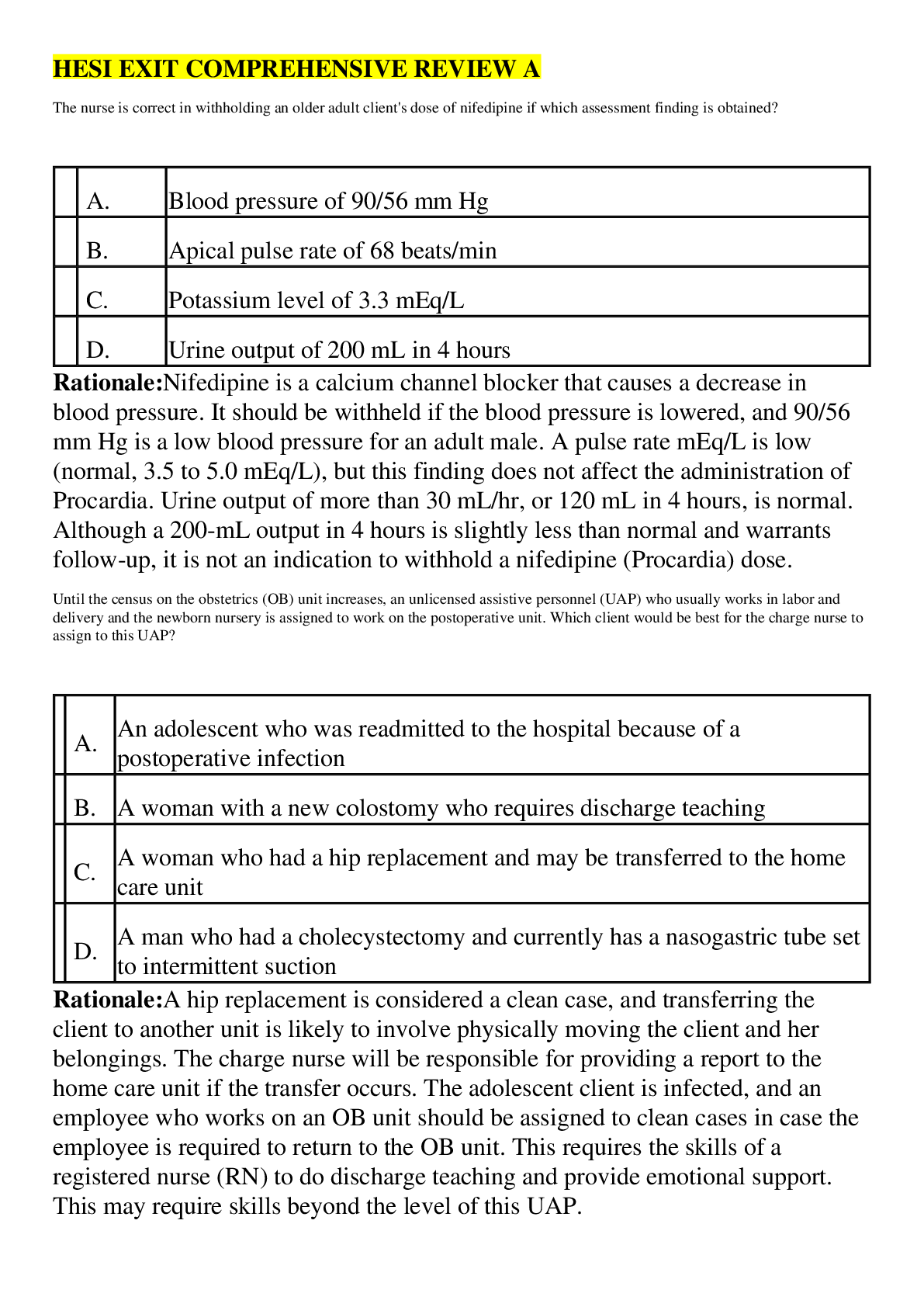
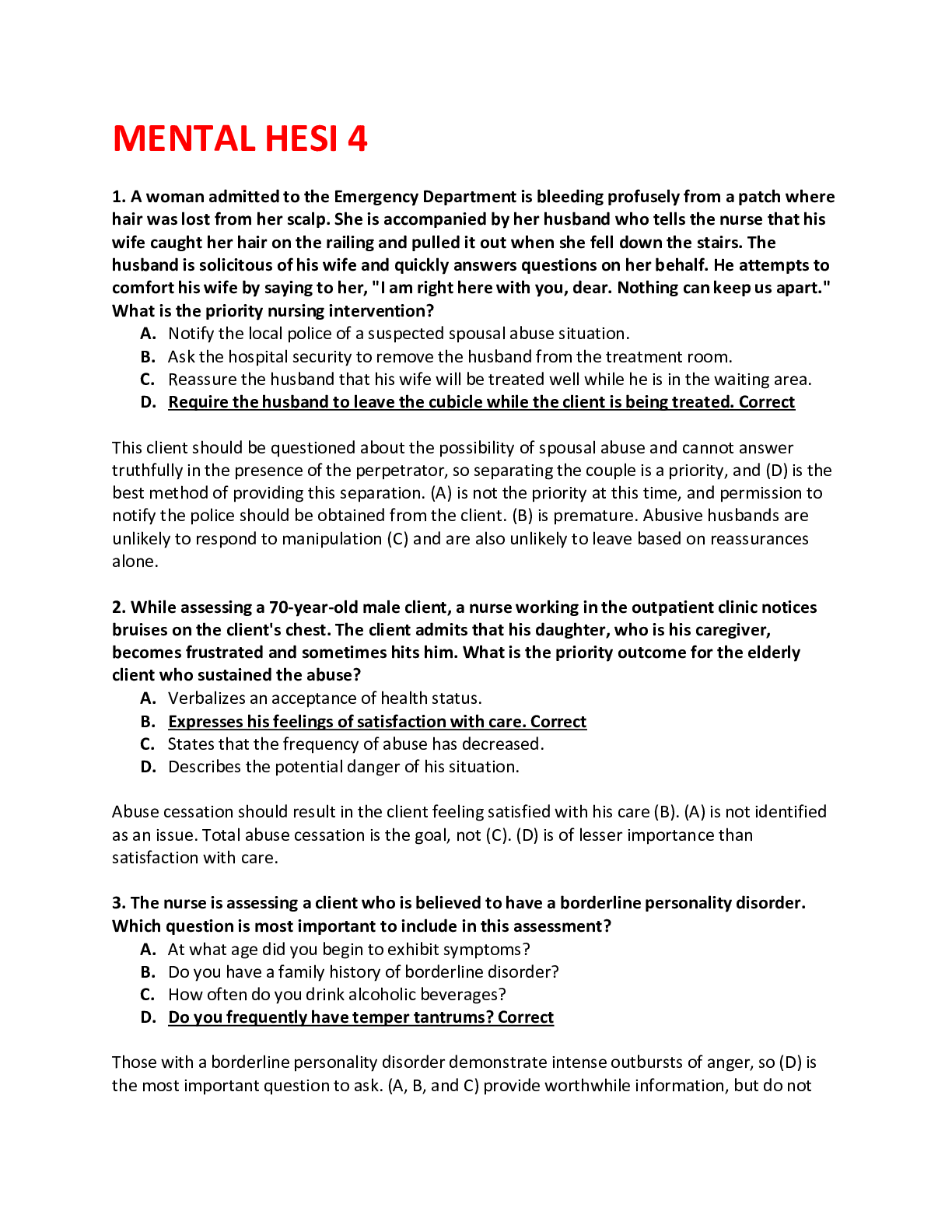
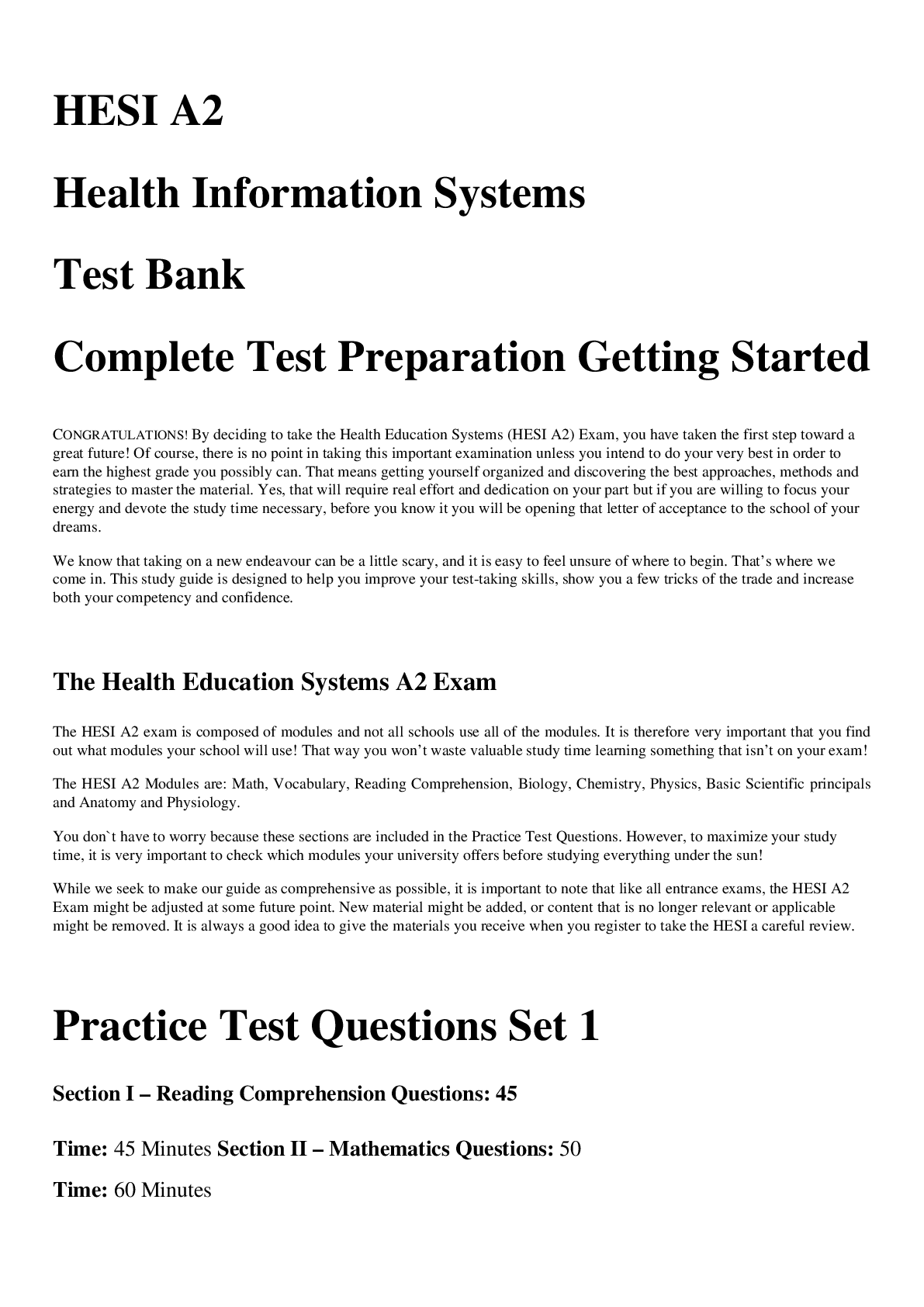
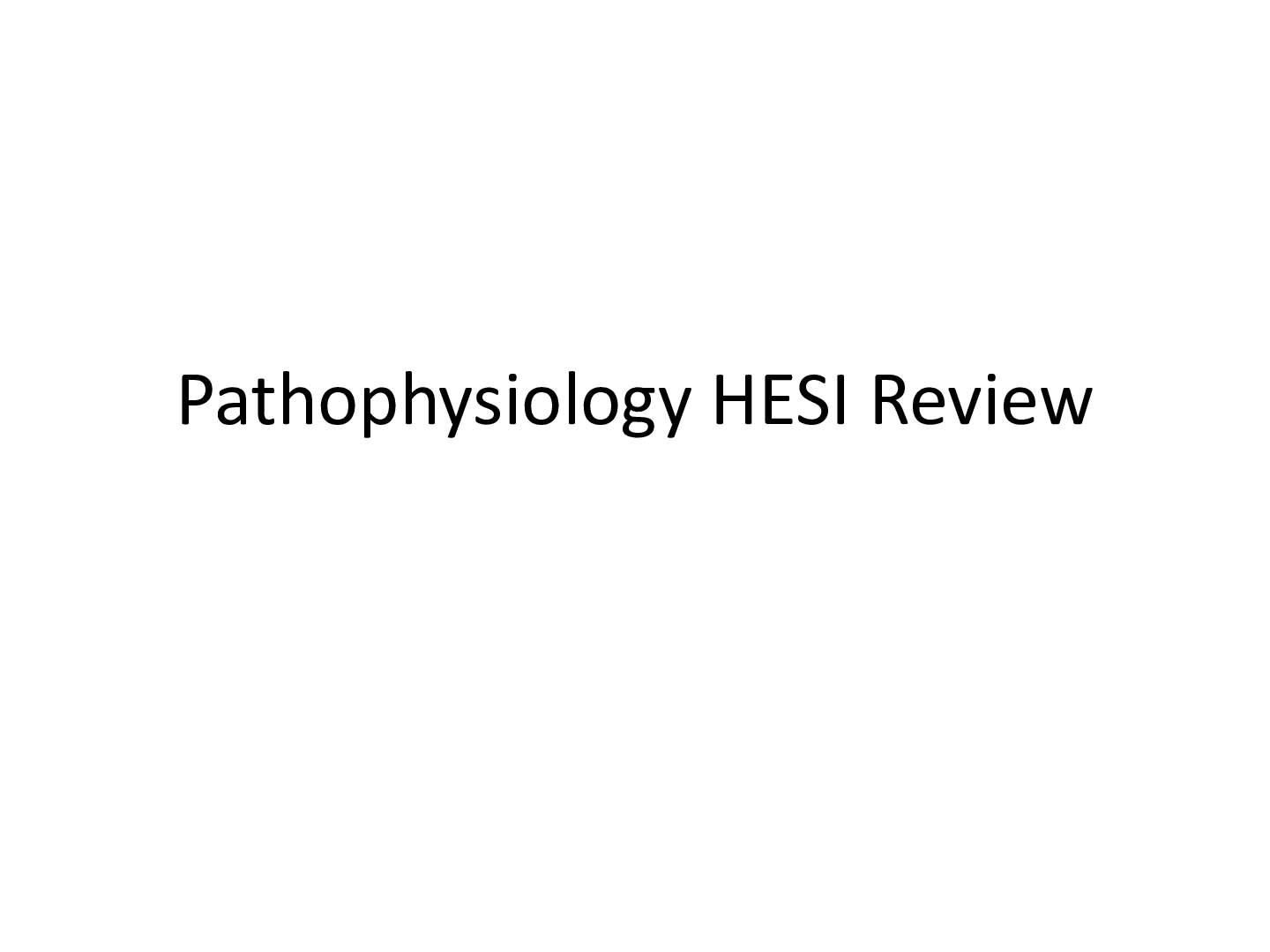
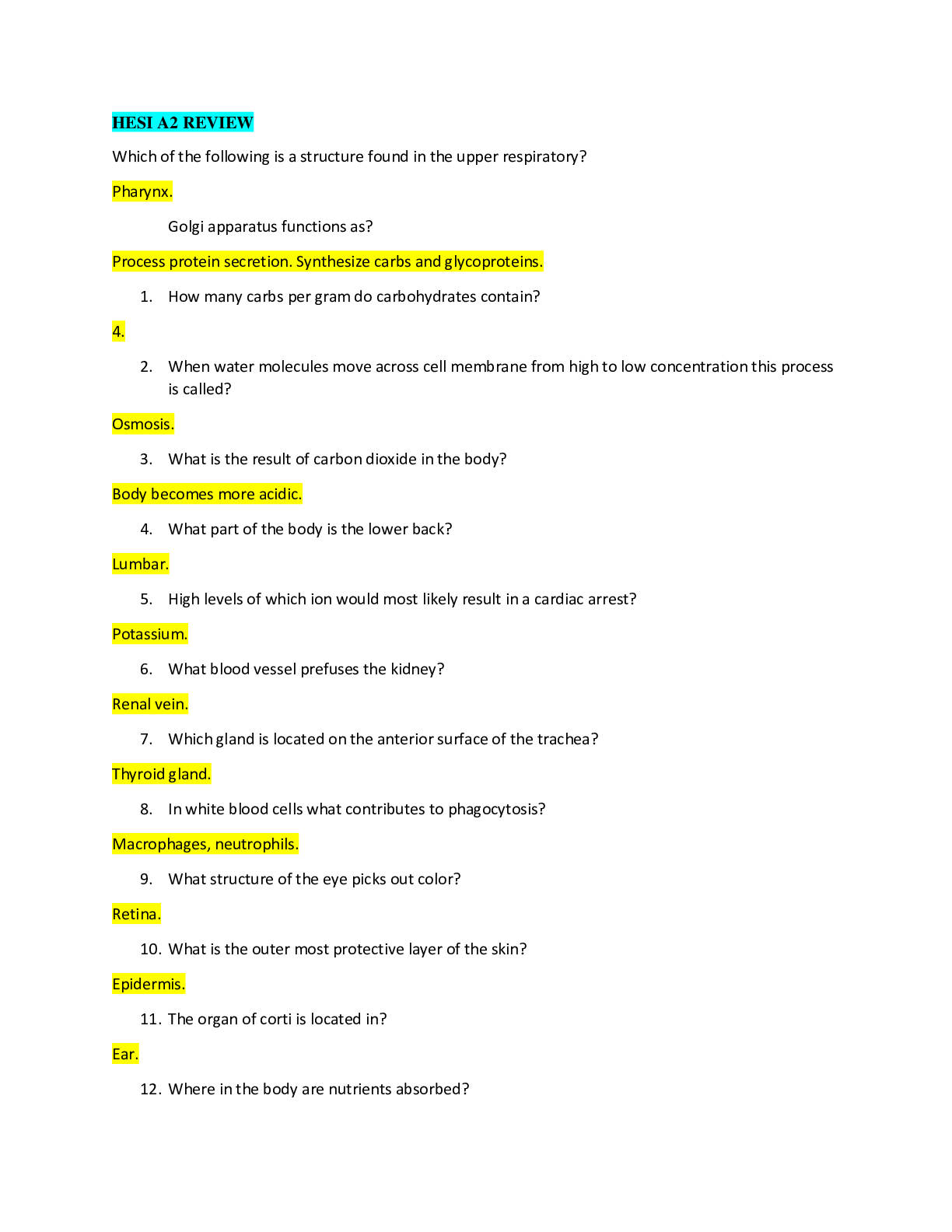
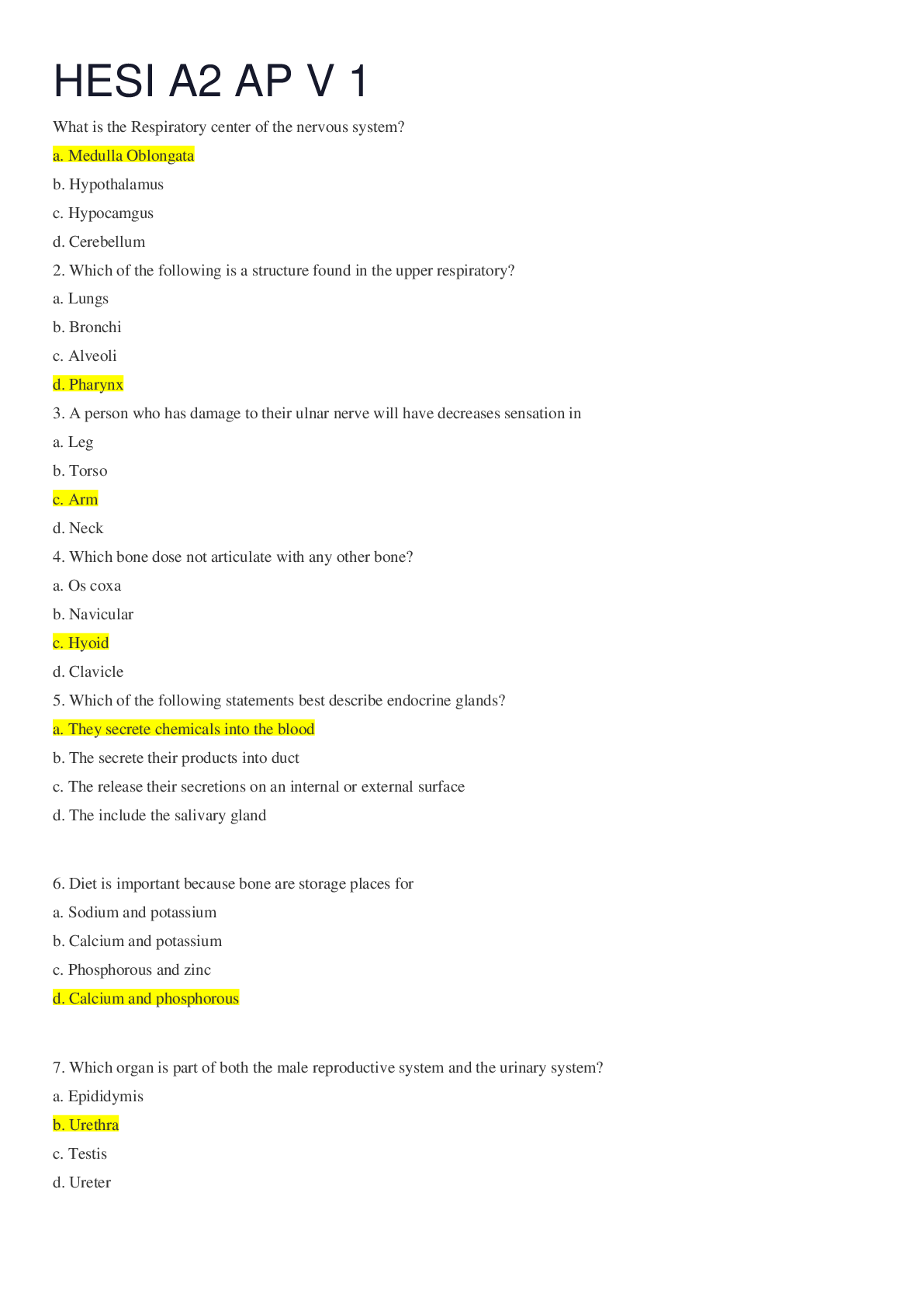

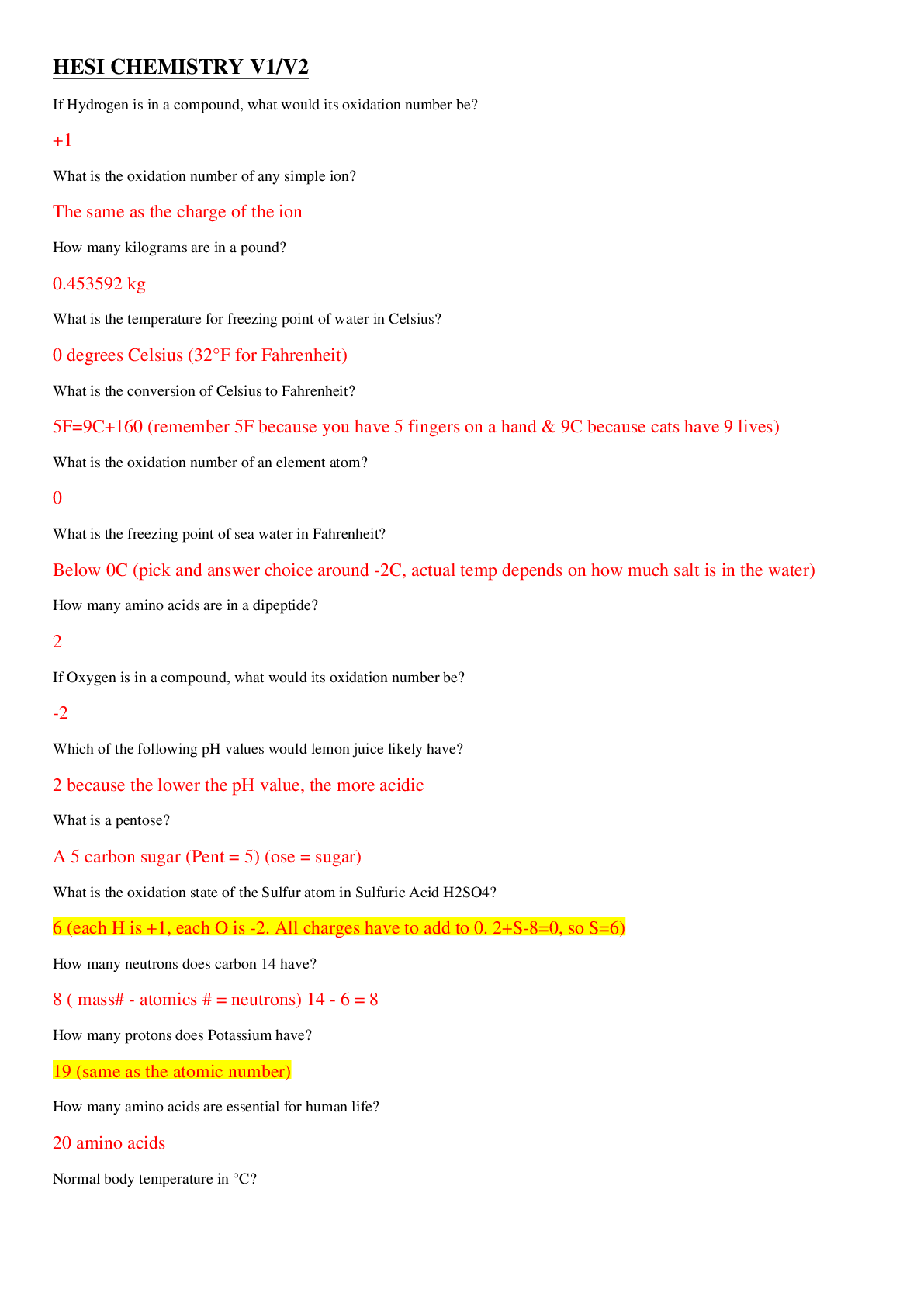

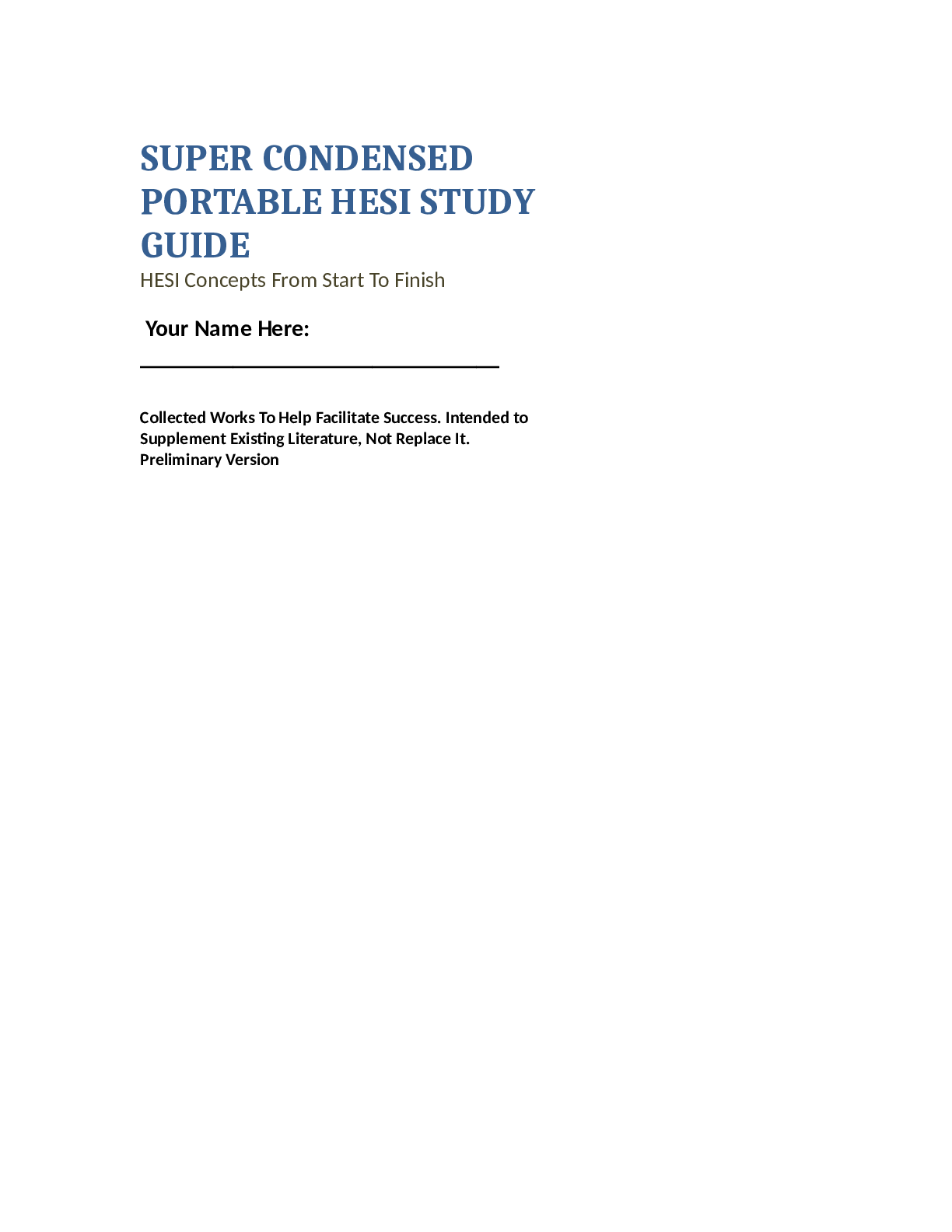




 (1).png)



